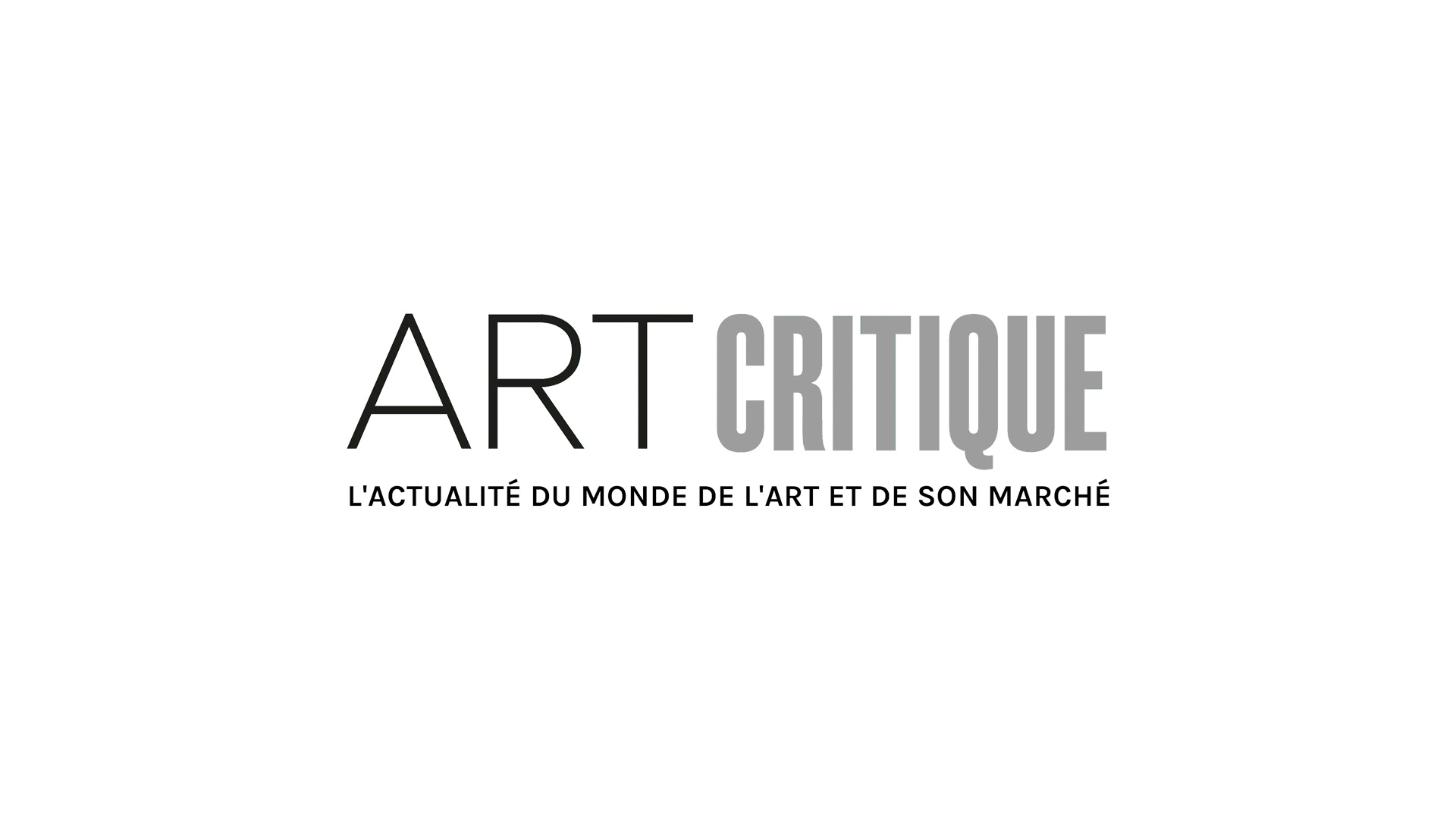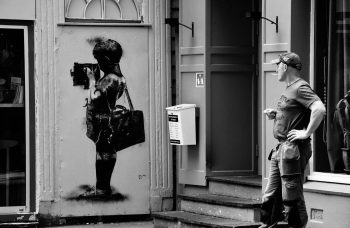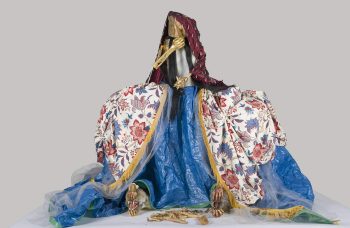Who doesn’t love a good bouquet? Floral still life paintings have been a mainstay in art since almost the beginning. Whether it’s a bouquet of roses or a single stem chrysanthemum, artists have offered up their take on foliage in more ways than can be counted. To kick start the week, here are 10 canvases full of flowers – some well-loved and others you might not be acquainted with, yet – to brighten your Monday.
Bouquet of Roses (c. 1890-1900), Pierre-Auguste Renoir
Renoir was no stranger to painting roses, there are numerous variations on the theme and it’s hard to choose a favourite amongst them. However, this version feels like a warm, indulgent embrace. Red and orange roses overwhelm the vase from which they spring, emulating their models. Visible brushstrokes offer up a romantic mood and even the background is beautiful in its brushy, greens and oranges. The painting showcases Renoir’s later focus on the feeling of his subjects as opposed to an exact representation of them.
Floral Theme in Two Parts (1980-1985), Norval Morrisseau
Anishinaabe artist Norval Morrisseau is considered the grandfather, or Mishomis, of Canadian contemporary Indigenous art. A self-professed shaman artist, Morrisseau’s works depict animals, plants, and Anishinaabe figures, which he experienced in visions. Floral Theme in Two Parts presents a near mirror image of a flowering plant surrounded by birds and butterflies. Vibrant colours radiate from the work creating an aesthetically pleasing and thought-provoking painting.
17th-century illustrations by Ustad Mansur
A 17th-century Mughal painter who primarily worked in the court of Jahangir, Ustad Mansur is known for his detailed paintings of wildlife and foliage. His prowess first earned him the title of ustad, meaning master, and later he earned the honorific Nãdir-al-’Asr, or “Wonder of the Epoch.” Mansur’s florals were at times the focus of his work and in other times secondary decoration reminiscent of earlier Persian manuscripts. His painting of a flower, as technical as it is beautiful, depicts the stages of the flower’s blossom while florals are used to accent an illustration of peafowl, in an equally beautiful, yet delicate manner.
Jimson Weed (1936), Georgia O’Keeffe
Of course, you can’t discuss floral paintings without coming to Georgia O’Keeffe. “If I could paint the flower exactly as I see it no one would see what I see because I would paint it small like the flower is small,” O’Keeffe once said of her work. “So I said to myself – I’ll paint what I see – what the flower is to me but I’ll paint it big and they will be surprised into taking time to look at it – I will make even busy New Yorkers take time to see what I see of flowers.” Ultimately, O’Keeffe did just that. Her paintings are captivating, sometimes disorienting, and it’s easy to forget that you’re looking at a painting of a flower. Jimson Weed was one of the largest works ever produced by O’Keeffe.
Flowers in a Glass Vase (c. 1814), John Constable
Vivid yellow and red flowers jump off the canvas of John Constable’s Flowers in a Glass Vase. The flowers are accompanied by rich green, expressionistic leaves, an occasional blue flourish, and deep neutral draping flowers. The vase catches the light in a transcendent manner that recalls the flecks of white, that would become known as “Constable snow,” that dot the large landscapes for which the artist is best-known.
Flowers in a Wooden Vase (1606-1607), Jan Brueghel the Elder
When it came to floral still life paintings, the Flemish had it. Jan Brueghel the Elder is perhaps one of the best known Flemish Masters who is often credited as a pioneer of the bouquet paintings. His meticulously detailed sill life paintings are a hallmark of the genre, attracting the attention of museum-goers, art historians, botanists, and entomologists alike. Perfectly moody, yet bursting with life, Brueghel’s paintings are hyper-realistic. Tulips, roses, forget-me-nots, narcissuses, peonies, irises, and various other flowers overflow in immaculate arrangements and if you look closely, you’ll catch glimpses of bees, butterflies, and caterpillars. The paintings are also loaded with symbolism, particularly that denoting the cycles of life.
Bullfinch and Weeping Cherry Blossoms (1834), Hokusai
Among the most influential Japanese artists, Hokusai was partial to painting flowers and birds. Bullfinch and Weeping Cherry Blossoms, painted in 1834, is a prime example of Hokusai’s work and offers an intriguing foliage painting. The striking blue background sets off the cherry blossoms that seem to float into the frame. The male bullfinch carelessly dangles from the branch adding a sense of uncertainty making it easy to understand why prints of this work are often displayed upside down. Without a middle ground, the space is flattened, as is typical amongst Japanese paintings.
Chrysanthemum (1900), Piet Mondrian
If the only works by Piet Mondrian you’re familiar with are his famous gridded paintings, his florals could seem shockingly uncharacteristic. Mondrian’s watercolour and charcoal artwork, Chrysanthemum showcases a different facet to the artist’s oeuvre. Austere and expressive, it is a far cry from the white and black gridded works with bright pops of colour. However, new research commencing at the Fondation Beyeler in Switzerland hopes to draw connections between his nature-based works and his abstractions. Either way, Chrysanthemum is a stunningly subtle ode to the flower and a beautiful example of a different side of Mondrian’s works.
Black Flowers (1961), Roy Lichtenstein
Another artwork that might come a surprising variant of their usual style is Roy Lichtenstein’s Black Flowers. Utilising his iconic Ben-Day dots, Lichtenstein depicts a vase full of tulips that almost over-bloom. Devoid of colour, the painting takes on a flat, newspaper-esque quality while paying homage to the flower painting traditions of generations past.
A Parrot Tulip, Auriculas, and Red Currants, with a Magpie Moth, its Caterpillar and Pupa, Maria Sibylla Merian
A Swiss naturalist, Maria Sibylla Merian made a name for herself as one of the first entomologist, but her botanical illustrations are why she’s made our list today. Her meticulous detail and scientific eye put her among the most renowned botanical artists. The foliage she depicts is presented in an innovative composition, as is the case in A Parrot Tulip, Auriculas, and Red Currants, with a Magpie Moth, its Caterpillar and Pupa. As the title indicates, it also shows the various stages of life of the Magpie Month, a common characteristic of Merian’s illustrations. Throughout her career, Merian published a number of engravings, some of which are now attributed to her daughter, Dorothea.
















